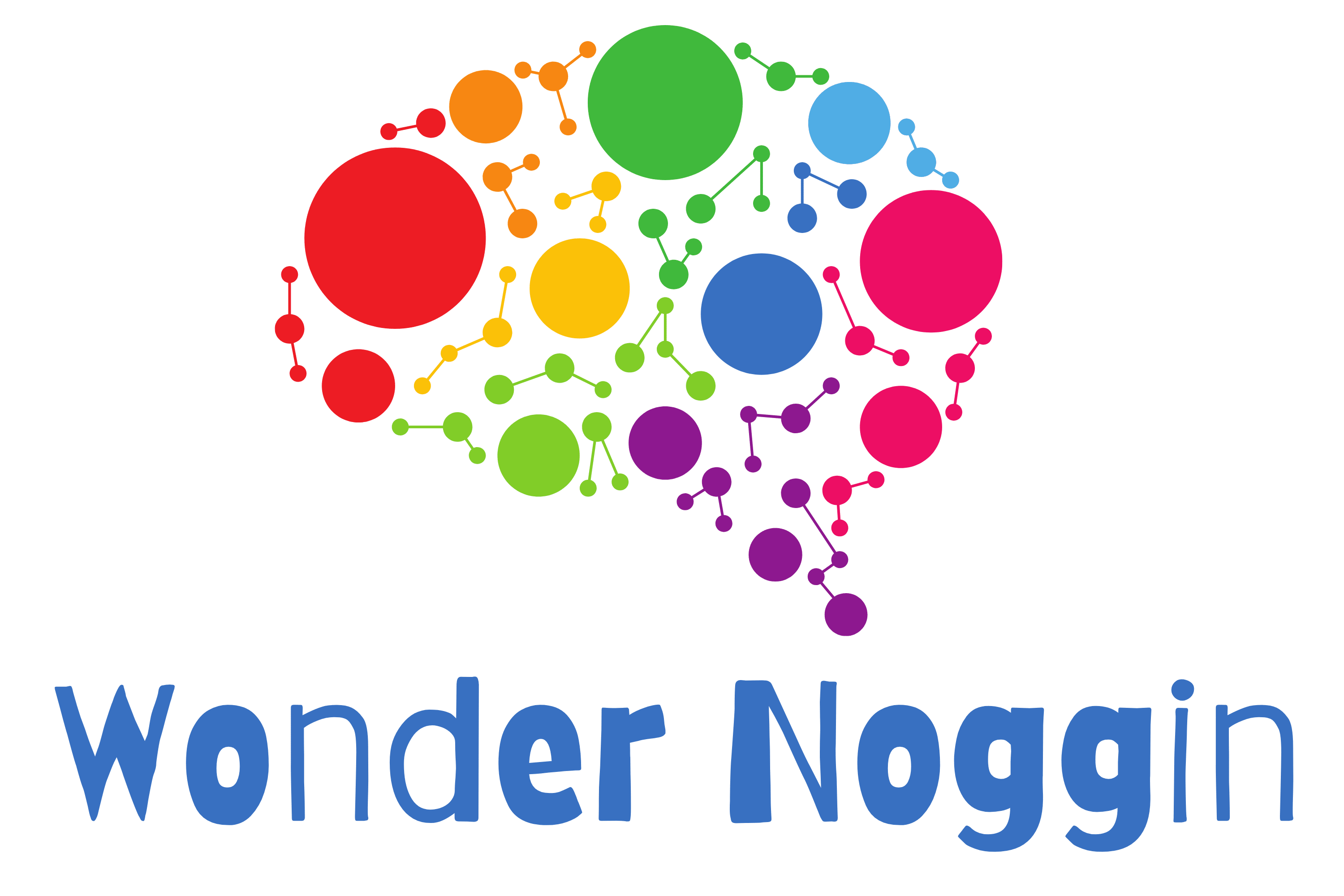As a parent, you’re always looking for ways to spark your child’s curiosity and foster a love for learning. Science books for 5-year-olds can be the perfect tool to ignite their imagination and introduce them to the wonders of the world around us. These captivating reads not only entertain but also lay the foundation for future STEM and STEAM success.
You’ll be amazed at how quickly your little one absorbs scientific concepts when presented in a fun, age-appropriate manner. From exploring the solar system to discovering the secrets of plant growth, these books can turn everyday moments into exciting learning opportunities.
By introducing science early, you’re giving your child a head start in developing critical thinking skills and a lifelong passion for discovery.
The Importance of Science Books for 5-Year-Olds
Science books for 5-year-olds are essential for fostering curiosity, critical thinking, and a love for exploration. My son, Lincoln, is already fascinated by science—whether he’s building simple machines or asking how the stars shine.
By introducing him to engaging science books, I aim to nurture his imagination and encourage him to see the world with wonder. These books not only make learning fun but also lay the groundwork for a lifelong passion for discovery and knowledge.
Developing Critical Thinking Skills
Science books, jam-packed with engaging and valuable content, encourage young children to ask questions, make observations, and draw conclusions.
This process helps develop critical thinking skills that are essential for problem-solving in all areas of life. By exploring scientific concepts through engaging stories and illustrations, children learn to think analytically and creatively.
Building a Strong Foundation for Future Learning
Early exposure to scientific concepts through age-appropriate books lays a solid foundation for future academic success.
These books introduce basic scientific vocabulary and ideas that children will encounter in more depth as they progress through their education. This early familiarity can boost confidence and interest in STEM subjects as children grow older.
Fostering Curiosity and Wonder
Science books for young children often present information in a way that sparks curiosity and encourages further exploration. Books that explain why volcanoes erupt can particularly ignite curiosity, making children eager to learn more about natural phenomena.
By presenting scientific phenomena in an accessible and exciting manner, these books instill a sense of wonder about the natural world. This curiosity can lead to a lifelong love of learning and discovery.
Enhancing Literacy Skills
While primarily focused on scientific concepts, these books also contribute to the development of literacy skills. Reading about science helps expand vocabulary, improve reading comprehension, and enhance overall language abilities. The combination of scientific content and engaging narratives provides a rich learning experience that supports both scientific understanding and literacy development.
Promoting STEM Career Awareness
Exposure to STEM books at an early age can introduce children to various scientific disciplines and potential career paths. By presenting scientists, engineers, and mathematicians as relatable characters, these books can inspire young readers to consider STEM careers in the future. This early awareness can help shape a child’s interests and aspirations from a young age.
Science Books that Promote Diversity and Inclusion
Science books that promote diversity and inclusion are essential for kids to learn about the world around them. These books showcase diverse cultures, environments, and individuals, helping kids develop empathy and understanding. By introducing young readers to a variety of perspectives, these books foster a sense of global awareness and appreciation for different ways of life.
Celebrating Women in STEM
Women in STEM fields have made significant contributions to science and technology, and their stories can inspire the next generation of young scientists. Books that celebrate these women not only promote gender equality but also encourage young girls to pursue careers in STEM.

“The Girl Who Drew Butterflies” by Joyce Sidman: This biography of Maria Merian, a 17th-century naturalist, tells the story of her groundbreaking work studying insects and their life cycles. Through beautiful illustrations and engaging narrative, young readers learn about Maria’s passion for science and her perseverance in a male-dominated field.

“Hidden Figures” by Margot Lee Shetterly: This inspiring story highlights the African-American women who worked as mathematicians and engineers at NASA during the early years of the space program. Their contributions were crucial to the success of many space missions, and their story encourages young readers to dream big and break barriers.
Showcasing Diverse Cultures and Environments
Science books that showcase diverse cultures and environments help kids learn about the world’s different ecosystems and the people who live in them. These books provide a window into the lives of others, fostering a sense of connection and understanding.

“The Magic School Bus Inside the Earth” by Joanna Cole and Bruce Degen: Join Ms. Frizzle and her class on an exciting journey through the Earth’s interior. This adventure explores different geological formations and ecosystems, making complex scientific concepts accessible and fun for young readers.

“The Water Princess” by Susan Verde and Georgie Badiel: This touching story follows a young girl in Africa who must walk miles to fetch water for her village. Through beautiful illustrations and a heartfelt narrative, children learn about the importance of access to clean water and the daily challenges faced by people in different parts of the world.
Science Books that Make Science Accessible
Science books that make science accessible to kids with disabilities are essential for promoting inclusivity and diversity in STEM education. These books ensure that all children, regardless of their abilities, can engage with and enjoy scientific concepts.
Books for Kids with Disabilities
Books that feature kids with disabilities as main characters help promote representation and inclusion in STEM education. These stories show that everyone can be a scientist, engineer, or mathematician, regardless of their physical or cognitive abilities.

“The Black Book of Colors” by Menena Cottin and Rosana Faria: This unique book tells the story of a blind boy who explores the world through touch and sound. With raised illustrations and text in both braille and print, it offers a multi-sensory experience that helps all children understand the concept of perceiving the world in different ways.

“Elmer” by David McKee: This beloved story about a patchwork elephant who learns to accept and celebrate his differences is a wonderful tool for teaching kids about diversity and inclusion. Elmer’s journey of self-acceptance encourages children to embrace their unique qualities and see the beauty in diversity.
Science Books that Inspire Imagination and Creativity
Science books that inspire imagination and creativity help kids develop problem-solving skills and think outside the box. These books encourage young readers to explore, discover, and dream, fostering a love for science and innovation.

“The Most Magnificent Thing” by Ashley Spires: This charming story follows a young girl who sets out to create the most magnificent thing. Through trial and error, she learns the value of perseverance and creativity. This book encourages children to experiment, make mistakes, and keep trying, highlighting the creative process in scientific discovery.

“What Do You Do With an Idea?” by Kobi Yamada: This inspiring tale follows a child who nurtures an idea, helping it grow and flourish. The story emphasizes the importance of imagination and creativity in bringing ideas to life, encouraging young readers to believe in their own potential to innovate and create.
By incorporating these diverse and inclusive science books into your child’s reading routine, you can help them develop a broader understanding of the world and inspire them to explore the endless possibilities in STEM fields.
Types of Science Books for 5-Year-Olds
Kids science books come in various formats designed to engage young minds and foster a love for learning. The best books are specifically curated to spark interest in young readers, covering topics like NASA, space exploration, and foundational concepts such as the Big Bang. These books cater to different learning styles and interests, making science accessible and exciting for children.
Picture Books
Picture books are an excellent introduction to science for 5-year-olds. They combine colorful illustrations with simple, engaging stories to explain scientific concepts:
- “Fairy Science” features a fairy named Esther who uses the scientific method to solve problems, promoting a scientific mindset in a magical context.
- “Tomie dePaola’s The Quicksand Book” uses humor and illustrations to explain the science of quicksand, making complex concepts accessible.
- “Jumper: A Day in the Life of a Backyard Jumping Spider” provides information about a jumping spider’s daily life, making it both informative and captivating.
Interactive Books
Interactive science books engage 5-year-olds through hands-on activities and experiments:
- Lift-the-flap books reveal hidden facts and explanations, encouraging exploration.
- Pop-up books create 3D representations of scientific concepts, enhancing visual learning.
- Books with tactile elements, like textured pages or movable parts, provide a multi-sensory learning experience.
STEM-Focused Books
STEM books for 5-year-olds integrate science, technology, engineering, and math concepts:
- “Rosie Revere, Engineer” introduces engineering principles through a story about a young inventor.
- “Counting on Katherine” combines math and space exploration, telling the story of Katherine Johnson’s contributions to NASA.
- “Ada Twist, Scientist” encourages curiosity and scientific inquiry through the adventures of a young girl.
These STEM books inspire children to explore various scientific disciplines and potential career paths from an early age.
Key Topics in Science Books for Preschoolers
Science books for 5-year-olds cover a wide range of fascinating topics, introducing young minds to the wonders of the natural world. These STEM books for 5-year-olds focus on age-appropriate concepts that spark curiosity and encourage exploration.
Human Body and Biology
Science books on human biology engage young readers with colorful illustrations and interactive elements. “Kay’s Anatomy” by Adam Kay offers a humorous yet informative look at the human body, making complex concepts accessible to children.
“Look inside Your Body” by Louie Stowell uses lift-the-flap pages to explore body systems, while “My Amazing Body Machine” by DK features papercraft artworks and bite-sized facts about organs like the brain and heart.
Nature and Environment
Preschool science books often explore the natural world, introducing concepts like ecosystems, weather, and plant life. These books use vibrant images and simple explanations to teach children about animals, habitats, and environmental conservation. Interactive elements, such as touch-and-feel textures or sound buttons, enhance the learning experience and keep young readers engaged with the content.
Simple Physics Concepts
Age-appropriate physics books for 5-year-olds introduce basic concepts like gravity, motion, and energy through relatable examples and hands-on experiments. These engineering books for 5-year-olds often include simple projects or activities that demonstrate scientific principles, encouraging children to learn through play and observation.
Topics like magnetism, light, and sound are presented in an easy-to-understand format with colorful illustrations.
Space and Astronomy
Space-themed science books capture the imagination of young children with stunning visuals of planets, stars, and galaxies. They often present the big bang in an engaging way, making complex scientific concepts accessible through humor and storytelling. These books introduce basic astronomical concepts, such as the solar system, day and night cycles, and space exploration.
Many space books for preschoolers include glow-in-the-dark features or fold-out pages to create an immersive learning experience, fostering a sense of wonder about the universe.
Choosing the Right Science Book
Selecting the ideal science book for a 5-year-old requires careful consideration of several factors. The right book not only sparks curiosity but also ensures that the content is accessible and engaging for young minds.
Age-Appropriate Content
When choosing science books for 5-year-olds, focus on titles that present complex concepts in simple, understandable terms. Books tailored for a middle grade audience are designed to be accessible and engaging, presenting complex topics in a relatable and entertaining manner.
The Nat Geo Big Book of Why and the I Wonder Why series are excellent examples of age-appropriate content. These books explain scientific ideas using vocabulary that’s accessible to young children, introducing new concepts gradually.
STEM books for 5-year-olds, like Science Squad by Robert Winstanley, present topics such as robotics and food chains in a fun, easy-to-understand format.
Engaging Illustrations
Look for books with vibrant, detailed illustrations that capture a child’s attention and help explain scientific concepts visually. Usborne Lift-the-flap books, covering topics like space and the human body, combine colorful images with interactive elements to make learning more engaging.
Engineering books for 5-year-olds often use creative illustrations to explain how machines work, making complex ideas more accessible.
Hands-On Activities
Science books that incorporate interactive elements or suggest simple experiments are ideal for young learners. Many math books for 5-year-olds include counting activities or simple problems to solve, reinforcing concepts through practical application.
Technology books for 5-year-olds might include basic coding activities or suggest easy at-home experiments related to electronics or simple machines. These hands-on elements encourage active learning and help children develop problem-solving skills while exploring scientific concepts.
Benefits of Reading Science Books to Young Children
Reading science books to young children offers numerous advantages that contribute to their intellectual and personal growth. These books serve as powerful tools for nurturing a child’s natural curiosity and love for learning.
Fostering Curiosity & Vocabulary
Science books for 5-year-olds spark curiosity by presenting fascinating facts and phenomena in an engaging manner.
Exposure to science books significantly enhances a child’s vocabulary. These books introduce specialized terms and concepts in a context that’s easy for young learners to grasp.
For example, “Kay’s Anatomy: A Complete (and Completely Disgusting) Guide to the Human Body” and “My Amazing Body Machine” use colorful illustrations and simple explanations to teach new words related to human biology, making complex topics accessible and memorable.
Incorporating Science Books into Daily Routines
Integrating science books into your 5-year-old’s daily routine can make learning a natural and enjoyable part of their day. By incorporating these books into bedtime reading and outdoor activities, you’ll foster a love for science and exploration.
Bedtime Reading
Bedtime reading is an ideal opportunity to introduce STEM books for 5-year-olds. Choose engaging titles that spark curiosity and promote scientific thinking:
- The Nat Geo Big Book of Why: This book explains various scientific concepts at a preschooler-friendly level, introducing ideas and vocabulary in an engaging way.
- Usborne Lift-the-flap books: These interactive books, covering topics like space and the human body, keep children engaged with lift-the-flap elements.
- I Wonder Why book series: Covering diverse topics such as space, animals, and machines, these books feature interesting pictures and short blurbs perfect for reading aloud.
- Zoey and Sassafras books: These fictional stories incorporate scientific techniques, introducing concepts through engaging narratives.
Outdoor Exploration Companions
Take science learning beyond the bedroom by incorporating books into outdoor activities:
- Field guides: Use age-appropriate field guides to identify plants, insects, or birds during nature walks.
- Weather books: Bring books about weather phenomena to discuss cloud formations or predict weather patterns during outdoor playtime.
- Astronomy guides: Use simple star charts or planet guides during nighttime stargazing sessions.
- Nature journals: Encourage your child to draw or write about their observations in a nature journal, complementing their outdoor experiences with hands-on learning.
By incorporating these STEM books for 5-year-olds into daily routines, you’ll create a rich learning environment that extends beyond traditional reading time.
Conclusion
Science books for 5-year-olds are powerful tools that ignite curiosity and foster a love for learning. By introducing these engaging reads to your child you’re opening doors to endless possibilities in STEM fields. These books not only enhance literacy skills but also develop critical thinking abilities crucial for future success.
Remember to choose age-appropriate titles with captivating illustrations and interactive elements. Incorporate them into daily routines like bedtime reading or outdoor exploration.
By doing so you’ll create an enriching environment that nurtures your child’s natural curiosity and sets the stage for a lifelong journey of discovery and learning.







0 Comments